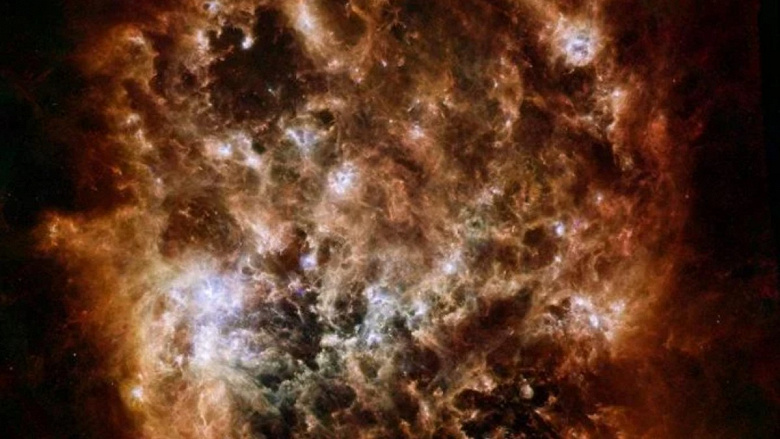The second generation star opens up new horizons in the study of the process of formation of elements and enrichment of the Universe
The first generation of stars had a great influence on the evolution of the Universe. Inside their cores, simple elements such as hydrogen and helium have fused into elements much richer in neutrons. When these stars exhausted their resources, they exploded, spreading these newly formed elements throughout the universe.
The elements that make up our physiology and mental activity, including iron, calcium and sodium, were formed in the hearts of long-dead stars. Scientists have still not been able to find any of the first-generation stars, but on March 20, a study about a unique find was published in the journal Nature Astronomy. They announced the discovery of a second-generation star that formed in a galaxy different from ours.
«This star provides a unique window into the very early stages of elemental formation in other galaxies. We have an idea of what these stars look like, which are a consequence of the enrichment of elements by the first stars, in the Milky Way, however, we are not yet sure whether some of these elements are unique or whether the formation process occurred in a similar way in other galaxies. ;mdash; said Anirudh Chithi, a postdoctoral fellow at the University of Chicago and senior author of the paper. Chiti specializes in so-called stellar archeology — reconstruction of the impact of the earliest generations of stars on the evolution of the Universe.
«We want to understand what the characteristics of the first stars were and what elements they produced», — noted Chiti. However, no one has yet been able to detect first-generation stars, if they remain in our Universe at all. Instead, Chiti and his colleagues are looking for stars formed from residual material from first-generation stars.
This is labor-intensive work, since second-generation stars are ancient and rare. Most stars in the Universe, including our Sun, arose after many generations, each of which accumulated more and more heavy elements.
Probably less than 1 in 100,000 stars in the Milky Way is a second generation star, — Chiti reported.
However, the hard work is worth it to gain an idea of what the Universe looked like in the past. «By examining the outer layers of these stars, we can detect elements from the regions where they formed. If we discover a very old star and determine its chemical composition, we can understand what elements existed in the region of that star's formation billions of years ago», — Chiti explained.
For their research, Chiti and his colleagues turned their telescopes to a special object — stars that make up the Large Magellanic Cloud. The Large Magellanic Cloud is a bright band of stars visible to the naked eye in the Southern Hemisphere. Astronomers believe that this is a galaxy captured by the Milky Way's gravity several billion years ago. This makes it especially interesting in the context of this study because its elder stars formed outside the Milky Way, giving astronomers the opportunity to learn whether conditions in the early Universe were similar or different in other regions.
Scientists searched for evidence of the existence of such ancient stars in the Large Magellanic Cloud and cataloged ten of them using the Gaia space telescope and then using the Magellan Telescopes located at the Las Campanas Observatory in Chile.
One such star was discovered in the data obtained. This star contained far fewer heavy elements than any other star in the Large Magellanic Cloud. This indicates that it probably formed after the first generation of stars and did not absorb heavier elements that are formed during repeated cycles of birth and death of stars.
By analyzing the composition of this star, scientists discovered that its carbon content is significantly less than the iron content compared to stars in the Milky Way.
This may mean that the increase in carbon in the earliest generation, as we see in the Milky Way, was not a universally widespread process. Further research is needed as our result indicates that there are differences across regions. This adds to the picture of what early elemental enrichment looks like in different environments, — explained Chiti.
The results also confirmed previous studies that suggested that the Large Magellanic Cloud had many fewer stars early in its formation compared to the Milky Way.
Chiti is currently leading a visualization program that aims to — compiling a large-scale map of the southern sky and searching for the earliest stars. «This discovery implies that there must be many such stars in the Large Magellanic Cloud. It is very interesting to study the stellar archeology of the Large Magellanic Cloud and be able to create a detailed map of how the first stars chemically enriched the Universe in different regions», — he noted.

